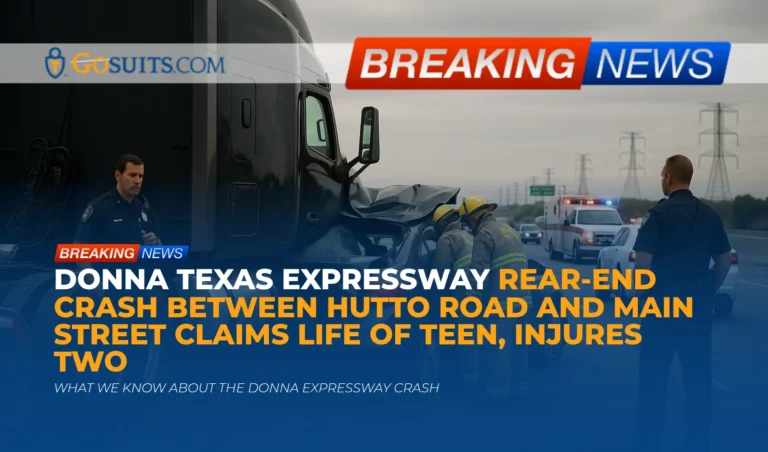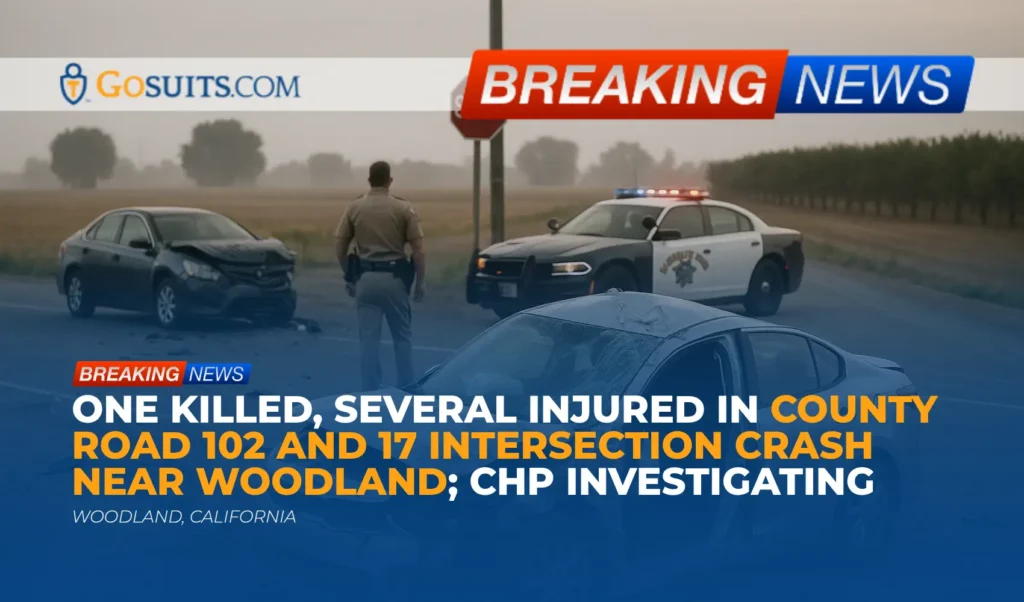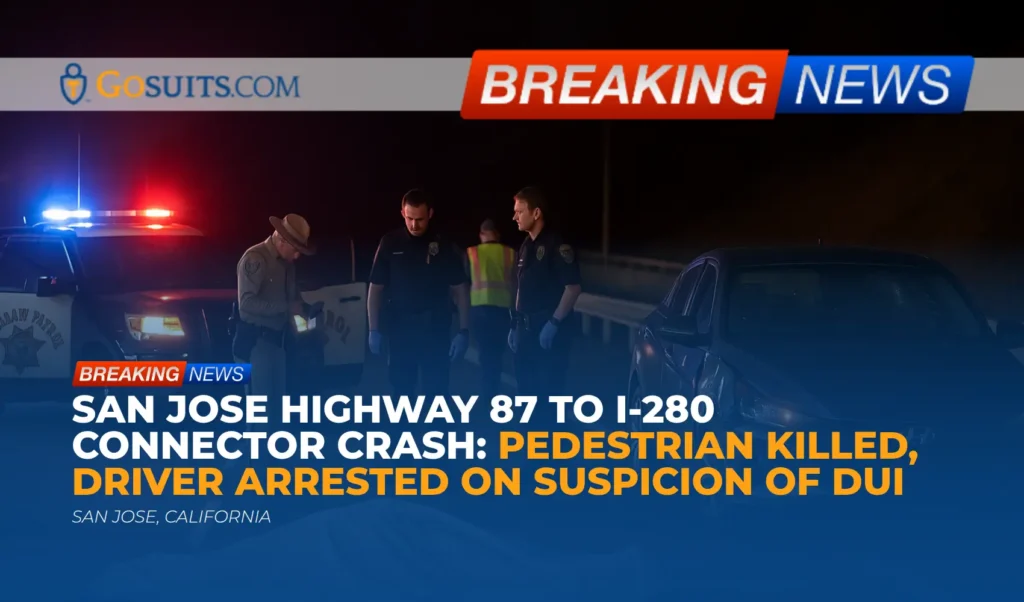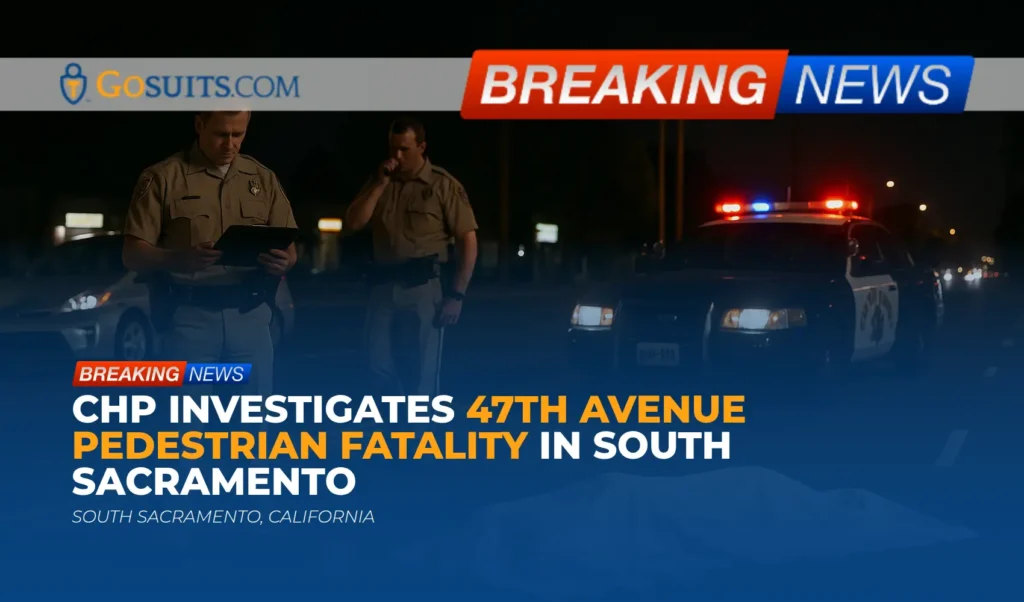- What we know about the Donna expressway crash
- Why rear-end crashes happen and the Texas rules that apply
- How fatal crash investigations proceed in Texas
- Civil considerations for families after a fatal roadway crash
- Insurance issues that often arise after a rear-end crash
- Practical steps to get key records and information
- Safety reflection for the community
- Commentary from Gosuits Donna, Texas Personal Injury Attorney
- Why acting promptly matters: next steps to consider
What we know about the Donna expressway crash
Authorities in Donna reported a serious crash on Tuesday, October 21, 2025, in the afternoon hours along the expressway between Hutto Road and Main Street. According to a Donna police spokesperson, a car carrying three occupants was rear-ended by a truck. All three people were taken to a local hospital, where a teenager from the car sadly died. Two others were hospitalized. The expressway was closed from North Hutto Road to Victoria Road for more than an hour and has since reopened. This is a developing situation and additional details may be released by law enforcement as their investigation progresses.
Confirmed details at this time
- Type of crash: Rear-end collision involving a truck impacting the back of a passenger car.
- Location: Expressway in Donna, between Hutto Road and Main Street; closure extended to Victoria Road during the response.
- Injuries/fatality: Three transported to a local hospital; one teen passed away; two individuals were hospitalized.
- Status: Roadway reopened after an extended closure for emergency response and initial investigation.
Out of respect for privacy and because information is still developing, identifying details have not been included here.
Traffic impacts and public safety
When a section of expressway is closed for more than an hour, it often signals complex emergency needs: medical transport, hazard mitigation, and initial crash reconstruction work. Drivers in adjacent areas may have faced delays and detours. Even after reopening, responders typically ask motorists to proceed with caution near incident scenes due to residual congestion and ongoing police activity.
Why rear-end crashes happen and the Texas rules that apply
Rear-end collisions often occur because a following driver does not leave enough distance or cannot stop in time due to speed, attention, traffic, or roadway conditions. Texas traffic laws reflect these safety principles and can be relevant in civil fault assessments.
Following distance and speed control
Texas law requires drivers to maintain a safe following distance so they can stop without colliding with a vehicle ahead, considering speed, traffic, and road conditions. See Texas Transportation Code Section 545.062 on following distance.
Drivers must also control speed to avoid collisions and operate at a speed that is reasonable and prudent under existing conditions. See Section 545.351 on maximum and prudent speeds.
In civil cases, a violation of a safety statute can be persuasive evidence of negligence when linked to the cause of a crash, though each case depends on its unique facts and the complete investigative record.
Duty to report and cooperate with crash investigations
Texas law outlines driver duties when a crash results in injury or death, including stopping, rendering aid, and reporting. See Texas Transportation Code Chapter 550, including Section 550.021 and related provisions on crash reporting. These rules support timely medical care and accurate crash documentation, both of which are important for families seeking clarity about what occurred.
How fatal crash investigations proceed in Texas
When a crash results in a fatality, law enforcement typically conducts a thorough investigation. The goal is to determine how the crash occurred, the sequence of events, and any contributing factors.
On-scene response and documentation
Police secure the scene for safety and evidence preservation. Typical on-scene steps include:
- Photographs and measurements: Skid marks, vehicle rest positions, debris fields, and roadway markings.
- Vehicle inspections: Visible damage patterns and, when applicable, downloading electronic data from onboard modules.
- Witness statements: Accounts from involved parties and bystanders to help confirm the sequence of events.
- Traffic controls: Temporary closures to protect responders and prevent secondary crashes.
After the initial response, investigators may continue gathering data, such as surveillance footage from nearby businesses, dashcam or in-car data, weather conditions, and roadway maintenance records if relevant.
Autopsy, inquest, and cause of death
In Texas, deaths from unnatural causes, including traffic crashes, are subject to inquest procedures. Depending on the county, these can be conducted by a medical examiner or a Justice of the Peace. The Texas Code of Criminal Procedure outlines these processes in Chapter 49. See Code of Criminal Procedure Chapter 49.
Families commonly ask about two distinct records:
- Autopsy report or inquest findings: Provides medical cause and manner of death.
- Death certificate: Issued through the state’s vital records system and may list cause of death based on the medical examiner or certifying official’s findings.
For certified copies of death certificates in Texas, see the Department of State Health Services Vital Statistics information at DSHS Vital Statistics.
Civil considerations for families after a fatal roadway crash
When a preventable crash causes a loss of life, civil law provides avenues for certain family members and estates to seek accountability and financial recovery for harms recognized under Texas law. The specifics depend on the investigation, insurance, and the applicable statutes.
Potential liability and who may be responsible
Rear-end collisions frequently raise questions about the following driver’s conduct. Depending on the facts, potentially responsible parties can include:
- The at-fault driver: If negligence such as following too closely or unsafe speed contributed to the crash.
- An employer or company: If the truck was being operated in the course and scope of employment, Texas law may allow claims against the employer based on vicarious liability and, in some cases, negligent hiring, training, supervision, or maintenance.
- Other contributors: In rarer situations, roadway defects, vehicle defects, or third-party conduct can play a role. Thorough investigation is needed before drawing conclusions.
It is important not to assume fault until all evidence is reviewed, including the official crash report, photographs, and any electronic data.
Wrongful death and survival claims in Texas
Texas recognizes wrongful death and survival actions.
- Wrongful death claims: May be brought by the decedent’s spouse, children, and parents for their losses stemming from the death. See the Texas Civil Practice and Remedies Code, Section 71.004.
- Survival claims: The decedent’s estate may recover certain damages the person could have pursued had they lived. See Section 71.021.
These claims are distinct; in many cases both may be pursued, depending on the circumstances and the evidence.
Time limits to bring a civil claim
Texas generally has a two-year limitations period for wrongful death and personal injury claims. See Civil Practice and Remedies Code Section 16.003. Unique factors, including claims involving minors, estates, or government entities, can affect how time limits are calculated. Prompt guidance can help ensure deadlines are protected.
Comparative responsibility
Texas uses proportionate responsibility rules. If multiple parties share fault, recoveries can be reduced by a claimant’s percentage of responsibility, and recovery may be barred if a claimant is more than 50 percent responsible. See Chapter 33 of the Civil Practice and Remedies Code. Families should be aware that insurers sometimes argue comparative fault even in rear-end crashes; a careful review of the evidence helps address those claims.
Categories of damages recognized by Texas law
Depending on proof and the type of claim, legally recognized harms can include economic losses, mental anguish, and loss of companionship and society for qualifying family members under the wrongful death statutes. See Chapter 71. In limited circumstances, exemplary (punitive) damages may be available when specific statutory standards are met. See Chapter 41. The particular damages in any matter depend on the facts and admissible evidence.

Insurance issues that often arise after a rear-end crash
Insurance questions emerge quickly after a serious collision. Without preparation, it can be easy to say or sign something that affects the family’s rights.
At-fault driver’s liability insurance
When a driver is at fault, their liability insurance typically addresses claims for injuries and deaths they cause, up to policy limits. Insurers investigate promptly and will often seek recorded statements. Families considering any insurance communication should know that statements can be used later in the claims process. It is prudent to consult with a seasoned attorney before giving statements or signing forms.
Commercial vehicle and employer coverage
If the truck in a rear-end crash was being used for work purposes, there may be an employer policy or commercial motor carrier coverage in addition to the driver’s personal coverage. Evidence such as vehicle markings, bills of lading, and driver logs can be important. Companies and their insurers typically begin defense efforts immediately; early evidence preservation can be critical.
Personal Injury Protection, Med-Pay, and UM/UIM
- Personal Injury Protection (PIP): Texas insurers must offer PIP with auto policies unless the coverage is rejected in writing. See Texas Insurance Code Section 1952.151. PIP can help with certain medical and related costs regardless of fault.
- Medical Payments (Med-Pay): Optional coverage that may pay some medical expenses, depending on the policy.
- Uninsured/Underinsured Motorist (UM/UIM): Insurers must also offer UM/UIM coverage unless properly rejected. See Texas Insurance Code Section 1952.101. It can be important if the at-fault party lacks sufficient coverage.
Policy terms and exclusions vary. Reviewing the full policy language helps clarify available benefits and deadlines for notice or proof-of-loss.
Be cautious with recorded statements and releases
Insurance adjusters may request quick recorded statements or early settlements. What is said can be used to dispute fault or reduce the value of a claim. Before speaking with any insurer, it is wise to consult an attorney to understand rights and obligations.
Practical steps to get key records and information
Several records can help families understand what happened and support any civil claim. Some are available only to certain parties or require proof of relationship.
Police crash report
In Texas, official crash reports are maintained through the state system. After processing, qualifying parties can request a copy of the report. The Texas Department of Transportation provides information on accessing crash reports and records at its Crash Reports and Records page.
Typical steps include:
- Identify the report: Note the date, location (expressway between Hutto Road and Main Street in Donna), and vehicles involved. If available, have a report number or the investigating agency (Donna Police Department).
- Confirm eligibility: Texas limits access to crash reports to certain parties such as those involved, their representatives, and insurers.
- Request through the state portal or agency: Follow the directions on the TxDOT site or request through the investigating agency’s records division once the report is finalized.
Emergency response and medical records
Hospitals and EMS providers maintain records of treatment. These can be requested by a parent or legal representative for a deceased minor, or by a personal representative of the estate once appointed. Providers will typically require identification, proof of authority, and signed authorizations.
Autopsy, inquest report, and death certificate
Texas inquests are governed by the Code of Criminal Procedure, Chapter 49. In counties without a medical examiner’s office, a Justice of the Peace oversees inquests and may order an autopsy as needed. See CCP Chapter 49.
- Who to contact: In Hidalgo County, families can contact the appropriate Justice of the Peace office for the precinct covering the area where the death occurred to inquire about inquest records, or the county-designated forensic administrator if applicable.
- Death certificates: Certified copies are available through Texas DSHS Vital Statistics; see DSHS Vital Statistics for ordering details, identification requirements, and eligibility.
Processing times can vary. Keeping a log of all requests and responses helps maintain an organized record.
Witness statements and scene evidence
Witness contact information can be invaluable. If law enforcement collected statements, those may be summarized in the crash report. It can also help to:
- Note nearby cameras: Businesses along the expressway, traffic cameras, or dashcams sometimes capture the moments before impact. Act quickly, as many systems overwrite footage.
- Preserve phone records and photos: Scene photos, vehicle damage images, and contemporaneous notes can help reconstruct events.
Vehicle preservation and electronic data
Modern vehicles often store crash-related data. Trucks may have engine control module (ECM) or telematics records, and many passenger vehicles contain event data recorder (EDR) information. Preserving vehicles and sending written preservation requests early can help protect this data from loss.
Agencies and offices families often call
- Donna Police Department, Records Division: To ask about the status of the crash report and any supplemental documents.
- Texas Department of Transportation (Crash Records): For state-handled crash report access and guidance on eligible requestors.
- Hidalgo County Justice of the Peace Office (appropriate precinct): For inquest or autopsy report information in fatal crash cases handled through the JP system.
- Texas DSHS Vital Statistics: For certified copies of the death certificate; policies and instructions are at DSHS Vital Statistics.
- Hospital or EMS provider involved: To request medical records and billing statements for treatment rendered.
- Insurance carriers: Liability, PIP, Med-Pay, or UM/UIM carriers connected to the vehicles involved. Before any statements or recorded interviews, consider consulting an attorney to avoid misstatements that could affect claims.

Safety reflection for the community
This crash is a heartbreaking reminder of how quickly lives can change on a busy expressway. Rear-end collisions are often preventable when drivers allow sufficient following distance and manage their speed for real-world conditions, including traffic slowdowns and construction zones. The rules in the Transportation Code are not just legal requirements; they reflect simple habits that can save lives.
Community members can help by reducing distractions, maintaining an assured distance, and being patient as traffic fluctuates. If an unexpected slowdown appears, smooth braking and hazard awareness can reduce the risk of chain-reaction crashes behind.
Commentary from Gosuits Donna, Texas Personal Injury Attorney
Our hearts are with the family and everyone affected by this tragic expressway crash. Losing a young life is devastating, and we extend our sincere condolences to the loved ones and classmates who are grieving. This commentary is meant for educational purposes and general information to help the community understand the civil law landscape that follows a serious roadway incident.
Based on the information shared by the police spokesperson, this was a rear-end collision in which a truck struck the back of a passenger car. In Texas, rear-end crashes frequently point to issues with following distance or speed control, though final conclusions depend on the full investigation, including vehicle data and witness accounts. It is important to let the facts lead. Still, rear-end dynamics typically focus attention on the conduct of the following driver and, where applicable, any employer’s responsibilities.
Insurance companies and large corporate defendants often act quickly after a serious crash. They may take recorded statements, seek early releases, or frame the narrative in a way that minimizes exposure. Many people are unfamiliar with the claims process and do not realize that a single statement can be used to argue comparative fault or downplay the severity of loss. Evidence that matters most, like vehicle “black box” data or surveillance footage, can be lost if not preserved promptly. This imbalance is why early guidance can be so important.
Obtaining a free consultation before engaging with insurers allows families to understand their rights, what documents to request, and how to avoid common pitfalls. These conversations help clarify time limits, which claims may be available under Texas wrongful death and survival laws, and what steps can protect evidence in the short term. While no discussion can ease the grief, good information can reduce confusion and help families make thoughtful decisions during a very difficult time.
Why acting promptly matters: next steps to consider
Early action can preserve rights and evidence. The following steps describe practical measures and why timing matters.
- Secure the official crash report: Request the report through the state’s crash records system or the investigating agency once available. The report number, date, and location will help the search. The report often names involved parties, vehicles, and any preliminary contributing factors.
- Preserve vehicles and electronic data: Issue written preservation notices for all involved vehicles. Many vehicles hold critical crash data that can clarify speed, braking, and throttle position; some data is overwritten if not preserved.
- Collect medical and emergency records: Obtain hospital and EMS records to document the timeline of care, treatments, and confirmed injuries. This helps bridge the narrative from crash to consequences and informs potential claims.
- Identify and protect video evidence: Act quickly to request footage from nearby businesses or residences and any available dashcams. Many systems auto-delete within days.
- Document all expenses and impacts: Keep receipts, insurance Explanation of Benefits (EOBs), funeral expenses, and notes about day-to-day impacts on the family. Accurate documentation supports any damages analysis under Texas law.
- Consult before speaking with insurers: Prior to giving recorded statements or signing any authorizations or releases, obtain a free consultation with a qualified attorney to understand rights and obligations. What is said early can have long-term effects on the claim.
- Calendar key time limits: Texas generally applies a two-year limitations period for wrongful death and personal injury claims. Note that unique factors may affect timing; tracking deadlines helps prevent unintentional waiver of rights.
- Coordinate with the inquest authority: Contact the appropriate county office (Justice of the Peace or medical examiner) to learn when inquest or autopsy findings will be available, and request certified copies when issued.
- Request certified death certificates: Order the number of copies needed for insurance, estate, and benefits matters through the state vital records system; agencies often require originals.
- Avoid social media discussions about the crash: Public posts are commonly reviewed by insurers and defense teams and can be misinterpreted or used to dispute claims.
Taking these steps can make a meaningful difference in understanding what happened, preserving the truth of the event, and preparing for any civil process that may follow. Acting sooner rather than later reduces the risk of lost evidence and missed deadlines.
Key legal sources cited
- Texas Transportation Code Section 545.062 (Following distance)
- Texas Transportation Code Section 545.351 (Reasonable and prudent speed)
- Texas Transportation Code Chapter 550 (Crashes and crash reporting)
- Texas Civil Practice and Remedies Code Chapter 71 (Wrongful death and survival)
- Texas Civil Practice and Remedies Code Section 16.003 (Limitations)
- Texas Civil Practice and Remedies Code Chapter 33 (Proportionate responsibility)
- Texas Civil Practice and Remedies Code Chapter 41 (Exemplary damages)
- Texas Code of Criminal Procedure Chapter 49 (Inquests; autopsies)
- Texas Insurance Code Section 1952.151 (PIP offer) and Section 1952.101 (UM/UIM offer)
- TxDOT Crash Reports and Records
- Texas DSHS Vital Statistics






